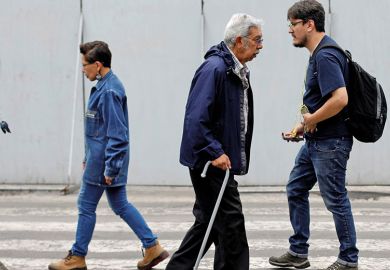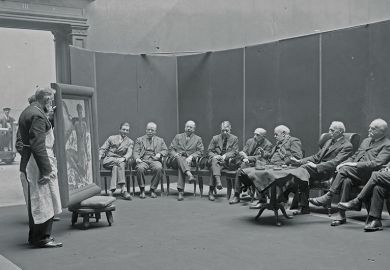The axeing of plans to measure “teaching intensity” at English universities as part of the teaching excellence framework may prove to be a short-lived reprieve, with experts warning that a stand-alone dataset on contact hours and class sizes could be even more misleading.
The English regulator, the Office for Students, said last October that it was dropping proposals to measure teaching intensity as part of the next iteration of the TEF amid widespread opposition from the sector.
The OfS has now told Times Higher Education that it was considering how to provide information about contact hours and class sizes as part of its development of a student information, advice and guidance strategy. This aims to create “a new resource to support students with their decision-making”, replacing the Unistats website.
However, academics have warned that a stand-alone teaching intensity score would lack vital context. Mission groups warn that teaching hours and class sizes cannot be used as measures of quality and highlight that other aspects of learning, such as independent study, are important but difficult to quantify.
Andrew Gunn, a researcher in higher education policy at the University of Leeds, said that prospective students might disregard a course with a low teaching intensity score, even if it would actually be highly suitable for them.
“At least within the TEF it would be considered by a panel who’d received guidance on what it means. This is a problem when applying the ‘food labelling’ approach to degree programmes,” Dr Gunn said.
“Teaching intensity isn’t a measure of quality, as it doesn’t capture what happens within contact time, and the government shouldn’t try to turn it in to one.”
Paul Ashwin, professor of higher education at Lancaster University, agreed. “My understanding [is that] the shift of teaching intensity out of the TEF is a recognition that teaching intensity is not a valid measure of teaching quality,” he said.
Professor Ashwin said that it was right that prospective students had clear information on the number, type and size of teaching sessions they could expect. However, a stand-alone teaching intensity measure could deter universities from improving their programmes in “innovative and exciting ways, because they are worried about being accused of having misled students”, he said.
Michael Merrifield, professor of astronomy at the University of Nottingham, said that piloting of the government’s proposals for measuring teaching intensity had “redoubled” his nervousness about the unintended consequences of a new metric. One option under consideration would have seen universities assessed according to their “gross teaching quotient”, a measure of contact hours, weighted by class size, rewarding small-group teaching. Another that would have weighted contact time by staff seniority was labelled “absurd”.
Effective and innovative teaching “is really not conducive to this very algorithmic approach”, Professor Merrifield said.
An OfS spokeswoman admitted that the “issue is complex”.
“By talking with students we will understand what they want and their expectations,” she said. “We are looking at ways to ensure that [institutions] provide much clearer and more transparent information for students about what teaching time, contact time and independent study time they should expect to experience on a particular course and why.”
Register to continue
Why register?
- Registration is free and only takes a moment
- Once registered, you can read 3 articles a month
- Sign up for our newsletter
Subscribe
Or subscribe for unlimited access to:
- Unlimited access to news, views, insights & reviews
- Digital editions
- Digital access to THE’s university and college rankings analysis
Already registered or a current subscriber?








